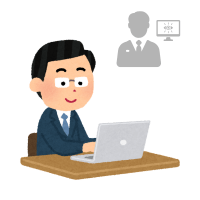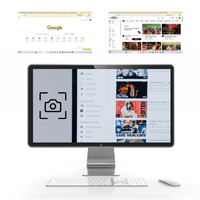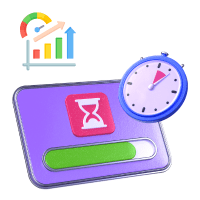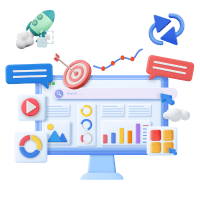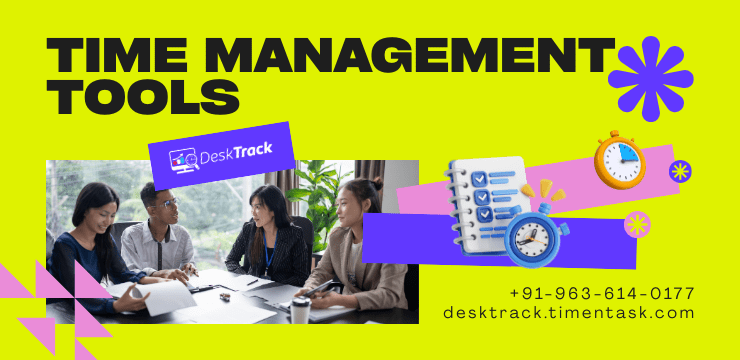So, what does the future of time tracking hold for businesses and organisations worldwide? What changes do we need to make to adapt to the latest work-hour tracking scenario? If this question is also there in your mind, then you are on the right page.
As modern technologies like automation and artificially intelligent tools invade employee time monitoring, only those going with the flow get the most benefits. So, in today’s blog, we will take you through a refresher, what’s current, and what the software for tracking employee time looks like as time progresses.
Did you know that AI and automation have made workforce management 25% more efficient? That is just the beginning of it all. With this, we conclude the initial introduction. So, let’s get started understanding the future of time tracking, workforce management, and the software solutions for it.
What is Time Tracking?
Make your workday more productive
Time tracking and work management can help you reach your goals
faster.
Every task we do, whether at a personal or professional level, takes some time to complete. Plus, we also go on breaks in between and are idle. Moreover, when we start recording this time, we are time tracking. Shifting our attention to employees, here are a few more things that add to its complexity.
- Tracking the time of employees must be accurate to ensure accurate payroll processing.
- Every time entry of employees must be categorised accordingly across different tags and labels, such as idle, break, and meeting time, for accurate client billing and invoicing.
- Employee work-time utilisation must be calculated on a specific basis, including KPIs and other performance metrics.
- Tracking employee hours is compulsory as per labour laws. However, it must never be done after staff clock out and before they clock in.
It is the best way to calculate employee work-time utilisation efficiency levels, boost efficiency, and productivity. Eventually, you will maximise profitability.
Read Also: All You Need to Know About Workload Management in 2025
What are the Different Types of Time Tracking?
![]()
From traditional to modern, the future of time tracking has come a long way. Furthermore, the best part is that it is still improvising. There are multiple methods to track employee hours. So, which one are you implementing in 2025?
1. Paper Timesheets
One of the manual ways to track employee time is to use weekly paper timesheets. Employees fill in time entries for tasks as per your policies, and they are done. Your HR professionals manage these sheets, which can become a mess after a few months. A few cons include:
- Scattered documents
- Lost information
- Errors and inefficiencies
2. Manual Entry
There is a good reason why manual entry is not a part of the future of time tracking. This one is prone to more errors and inefficiencies. Plus, employees can also easily engage in practices that can cost you around $1000-$2000 per employee per year, such as:
- Time theft
- Buddy punching
3. Employee Clocking Systems
These systems record employee clock-in and clock-out. Usually, these are biometric or require a card to be tapped to work. However, employees can still use the system to their advantage. For instance, an employee staying late in the office and clocking out as per their wish to gain a bonus on false or unauthorised overtime, which can cost you anywhere between $1000 and $10000 per year.
4. Project Management Tools
Project management tools track employee hours based on the time spent on various tasks and projects. These solutions help track task progress, employee task-time utilisation efficiency, and provide you with detailed insights and analysis on how much the efforts are matching up to the KPIs.
5. Time Trackers
Time trackers are simple applications, which can be anything from simple timers to fully-functional software with basic hours monitoring capabilities. Usually, these are free. However, even the paid options are affordable.
6. GPS Time Clocks
As the future of time tracking introduced modernisation, the need for location-based hours tracking also became a concern. GPS time clocks solved the problem. Talking about use cases, it’s the best for field employees. Don’t you think?
7. Employee Monitoring Tools
Employee monitoring software solutions track employee work hours based on the time your employees spend doing various online and offline activities. For instance, tracking the time spent on various apps, URLs, and files.
8. Biometric Time Clocks
Biometric hour clocks are one of the most tamper-proof staff attendance systems. They are best for businesses that pay employees monthly salaries. However, again, the data is only as accurate as when the employees clock in and out.
9. Spreadsheets
Spreadsheets make the work of your employees and HRs much easier when it comes to filling in time entries. It solves the issue of lost data. However, data inaccuracy can still happen. Also, it is time-consuming unless you remember all the complex formulas. Thus, the future of time tracking will not have these sheets.
10. Trust System
This is the most unstructured way to track employee hours. It is completely based on trust and transparency, as employees tell how much time they have utilised before leaving for the day. However, do you think that employees will ever tell the truth? Cause we don’t.
11. Punch Cards
Some organisations still use punch cards to keep track of employee work-time utilisation. These are used to track attendance. Plus, employees also have to tap the card before and after completing a task to create a time entry. It can still be inaccurate if employees forget to punch even the end time entry for a task. The future of time tracking is even better than this.
12. Swipe Cards
Swipe cards work the same as punch cards. However, employees have to swipe them against a reader. It’s similar to how you would swipe your bank cards.
13. Time Tracking Software
That’s what we are talking about. The future of time tracking software. These solutions track employee time most accurately. Usually, automatic or automated.
What is Time Tracking Software?
Time tracking software is what you should be using in your organisation. If you are sensible, that is. Simply put, it is an integrated software solution that does all the hard part of tracking, analysing, and reporting employee work-time for you. As we mentioned before, these usually work automatically or are automated. However, the systems also allow employees to fill in manual time entries if needed to ensure that every second of effort is compensated for:
- Automatic: The software will automatically track time based on specific triggers. For instance, a team member opening or closing a browser tab.
- Automated: Employees will have to click a button to start, stop, pause, or resume a task timer.
- Manual: Employees can also fill in manual time entries for missed hours. To give you an example, offline meeting hours.
What are the Key Features of Time Tracking Software for Your Business?
![]()
Before going to the future of time tracking, we must wrap our heads around how the software for it accrues work-hour tracking. The features not only do that but also provide many other work-time utilisation functionalities.
1. Time Categorisation
Not all time entries are productive. There are also unproductive logs like idle time, break time, and time when employees are visiting non-useful websites during an important project. Using the right time tracker software, you can easily categorise employee hours. All you have to do is add labels and tags to time entries, and all data is sorted.
2. Flexible Time Tracking Options
An hour monitoring application automatically monitors staff hours. However, they also allow staff members to enter manual time entries or run task timers as per their requirements. Moreover, we are sure that the future of time tracking will ensure more accuracy.
3. Multiple Views
Viewing employee work-time utilisation information in just plain text takes time to process and identify efficiency levels. Thus, the right software for tracking employee time provides you with more than one way to view work performance insights. You can view information in the way you understand via lists, colour-coded calendars, charts, and/or graph views.
4. Integrations
The future of time tracking will be about more integrations and improving the existing ones to be more seamless. Integrations save time by ensuring that you can access all data and features from a single platform. For instance:
- Integrating your time tracker tool with payroll software ensures accurate payroll processing via automation of sharing time entries.
- Integration with your calendar ensures that your time tracker directly pulls an event and converts it into a time entry.
5. User-Friendly Dashboard
Even if it’s not user-friendly, the single interface dashboard eliminates all the confusion and chaos that would otherwise be by accessing multiple dashboards to access all data. It’s much faster, accurate, and efficient.
6. Payroll & Invoicing
Whether integrated or built-in, software for tracking time also provides you with features for calculating payroll and invoicing. It’s again much faster and accurate as there is no human intervention. Plus, the results are editable too. Furthermore, the future of time tracking also depends on how much this feature gets better.
7. Attendance Tracking
Attendance tracking and management is another one of the handy tool options of time tracking software. This functionality provides you with automation tools for simplifying attendance management, which otherwise would have been a 1-8% heavier workload for you.
Read Also: Top 15 Best Employee Task Scheduling Software in 2025
What are the Key Trends in Workforce Management?
The possible future of workforce management will keep multiple new patterns. Plus, many old patterns will remain, which will further adapt to the latest requirements. Do you know that new organisations fail within the 1st few years by not following trends? So, here’s what you must keep up with.
1. Automation
Either automate your HR and workforce management processes, or you will be automatically thrown out of the market. Only those who automate mundane tasks and essential processes can focus on business expansion, planning, and strategising. It’s as simple as that.
2. Artificially Intelligent Tools
Another essential part of the future of workforce management is the inclusion of artificially intelligent tools. AI and automation are all about accuracy, which is crucial for boosting efficiency for any business these days.
3. Gamification
This one is an old trend, which continues in 2025 and beyond, enhancing employee engagement. What gamification in workforce management means is to include the interface of something that employees love (video games) and add it to the tool. For instance:
- Allowing you and your employees to create your personalised characters, which lose health on the failure of tasks.
4. Employee Inclusion
The future of workforce management will focus more on involving employees in crucial processes. That is 100% clarity, which boosts employee trust and skyrockets staff retention rates.
5. Focus on Employee Well-Being
These days, it’s crucial to prioritise employee well-being over everything else. There is more and more focus on employee well-being via healthcare incentives. When employees realize that they are also cared for, they work harder and smarter for you.
6. Upskilling & Riskilling
Another regularity that will be in the future of workforce management is to assist your staff in upskilling and reskilling to adapt to the ever-changing market requirements. This is the best way to help them grow in their careers.
7. Remote & Hybrid Work
Remote and hybrid work is here to stay for a long time. So, using the proper tools to monitor and manage these employees is also required. You know how it started 4-5 years ago.
How Have Artificially Intelligent Tools Modernized Time Tracking & Workforce Management?

Did you know that by 2030, 30% of manual labour time will be freed up? The impact of artificially intelligent tools on time tracking and workforce management is quite significant. Here are the benefits of adopting these solutions.
1. Enhanced Attendance Accuracy
With the inclusion of AI, attendance tracking is now more accurate. Say biometric clock in and clock out, and timers accrue every entry down to the last second.
2. Simplified HR Management
Another impact of artificially intelligent tools on time tracking and workforce management is enhanced and simplified HR management. AI-powered workforce management solutions can also identify stress and burnout based on behaviour analytics.
3. Decreased Payroll Errors
AI-powered workforce management tools reduce payroll errors to almost zero. This saves you heavy expenses in terms of approximately 440 hours and around $300 in money per error.
4. Streamlined Compliance
Another impact of artificially intelligent tools on time tracking and workforce management is streamlined compliance management. The tools auto-update to assist you in complying with the latest rules and regulations.
5. Data-Driven Decision-Making
Data-driven decision-making just got better with the inclusion of AI-powered time tracking and workforce management solutions. This is due to the latest software being able to process loads of data and performance reports accurately within seconds.
Conclusion
Now, we hope that you have wrapped your head around the future of time tracking and workforce management. As a final word, we can say that tracking employee time has come a long way, transitioning from traditional to advanced modern tools and software usage that incorporate automation and artificially intelligent tools and automation features for enhanced accuracy and efficiency to boost employee work-time utilisation and productivity. Furthermore, it’s also essential to keep up with the latest trends to achieve more and more success. However, what if you want a software solution that provides more than time tracking with data analytics? DeskTrack is the best all-in-one workforce management and monitoring software for your in-office, field, hybrid, and remote employees and teams.
Frequently Asked Questions (FAQ)
Q. Is Time Tracking Worth it?
Ans. Yes, it’s worth it. It helps you set standards, budgets, estimates, and accrue compliance. The results of time tracking are:
- More effective teams
- Boost organizational productivity
- Increase business profitability
Q. What are the Key Features of Time Tracking Software?
Ans. These key features will be further enhanced in the future of time tracking software.
- Time Categorisation
- Flexible Time Tracking Options
- Multiple Views
- Integrations
- User-Friendly Dashboard
- Payroll & Invoicing
- Attendance Tracking
Q. Is Time Tracking Micromanagement?
Ans. No, time tracking is not micromanagement. However, it can be, if you:
- Use it for personal gains.
- Track hours outside office time
- Use it to pressurise employees to meet specific requirements.
Q. What are the Key Trends in Workforce Management?
Ans. Here are some of the latest happenings in workforce management.
- Automation
- Artificially Intelligent Tools
- Gamification
- Employee Inclusion
- Focus on Employee Well-Being
- Upskilling & Riskilling
- Remote & Hybrid Work
Q. What is the Future of AI in Workforce Management?
Ans. Here’s how the inclusion of artificially intelligent tools benefits workforce management software.
- Enhanced Attendance Accuracy
- Simplified HR Management
- Decreased Payroll Errors
- Streamlined Compliance
- Data-Driven Decision-Making



